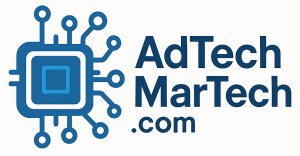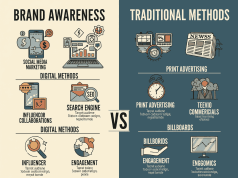Programmatic Advertising: The Key to Targeting and Personalization
In the ever-evolving landscape of digital marketing, programmatic advertising has emerged as a game-changer, enabling brands to reach their target audiences with unprecedented precision. As consumers become increasingly inundated with ads, the need for tailored and relevant advertising has never been greater. Programmatic advertising stands at the forefront of this shift, leveraging big data and automation to enhance targeting and personalization.
What is Programmatic Advertising?
Programmatic advertising refers to the automated buying and selling of digital ad space in real-time. Unlike traditional advertising methods that often involve direct negotiations and manual processes, programmatic advertising utilizes algorithms and data analytics to streamline the ad placement process. This not only increases efficiency but also optimizes ad spend by ensuring that ads are served to the most relevant audience at the right time.
The Importance of Targeting
One of the standout features of programmatic advertising is its targeting capabilities. Traditional advertising methods often rely on demographics such as age, gender, and geographic location. While these factors can be helpful, they don’t paint a complete picture of consumer behavior. Programmatic advertising delves deeper, leveraging data-driven insights to target individuals based on:
Behavioral Targeting: Understanding how users interact with content online allows advertisers to reach them based on their specific activities, such as websites visited, products viewed, and previous engagements.
Contextual Targeting: Ads can be served based on the content of the web page, ensuring that they are relevant to the surrounding context. For instance, a fitness brand might choose to advertise on health and wellness blogs.
- Retargeting: This strategy involves serving ads to users who have previously interacted with a brand but did not convert. It helps rekindle interest and nudges potential customers closer to a decision.
Personalization at Scale
In today’s digital environment, consumers expect personalized experiences. Programmatic advertising excels in delivering personalized ad content at scale. It utilizes machine learning algorithms to analyze vast sets of consumer data and predict what messages and products will resonate best with individual users.
Here’s how personalization in programmatic advertising can drive engagement:
Dynamic Creative Optimization (DCO): This technique allows advertisers to tailor the creative elements of their ads (headlines, images, and calls to action) in real-time based on the viewer’s profile and previous interactions, leading to higher relevance and engagement rates.
- Audience Segmentation: Advertisers can segment their audiences into micro-targeted groups, allowing for highly customized messaging that aligns with the distinct needs and preferences of these segments.
Measuring Success
A significant advantage of programmatic advertising is its ability to provide detailed analytics and insights into campaign performance. Marketers can track metrics such as click-through rates, conversion rates, and return on ad spend, allowing for continuous optimization. By analyzing this data, advertisers can refine their strategies in real-time, ensuring that their budget yields the highest possible return.
Challenges and Considerations
While programmatic advertising offers numerous benefits, it is not without challenges. Issues such as ad fraud, privacy regulations, and data management can complicate the landscape. Brands must navigate these challenges carefully to maintain consumer trust and ensure compliance with regulations like GDPR and CCPA.
Conclusion
Programmatic advertising is reshaping the way brands approach digital marketing. With its ability to deliver targeted, personalized content at scale, it empowers marketers to connect with consumers on a deeper level. As technology continues to evolve, the potential for programmatic advertising to enhance targeting and personalization will only grow, positioning it as a cornerstone of successful digital marketing strategies in the future. Embracing this approach will be vital for brands looking to cut through the noise in today’s competitive market.









